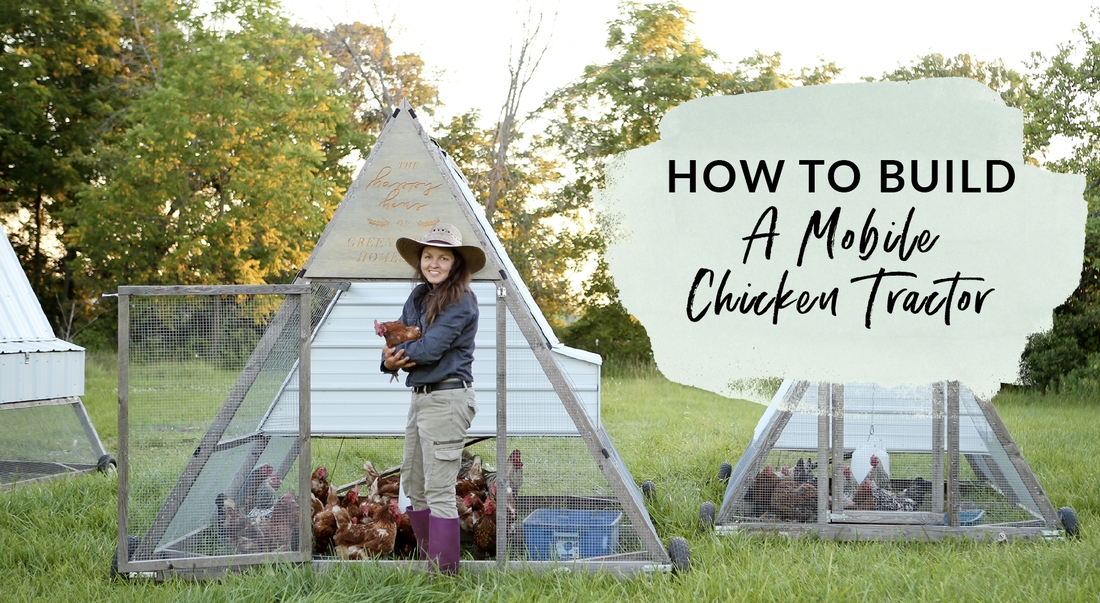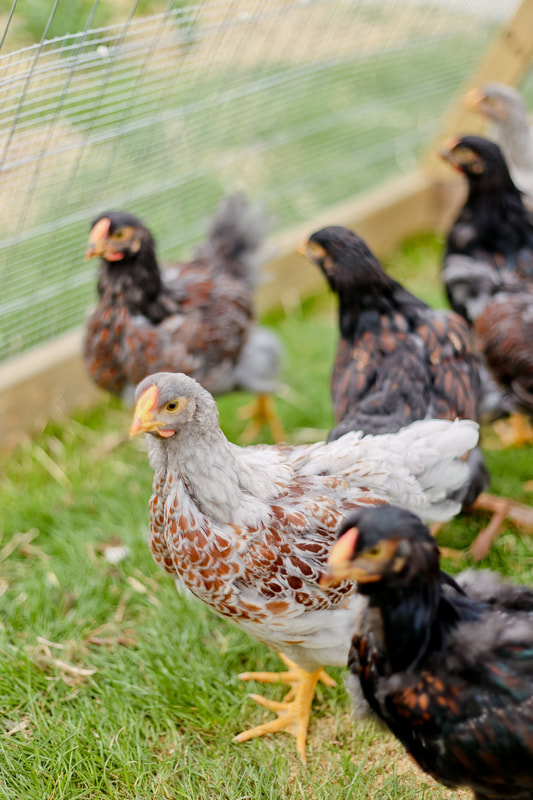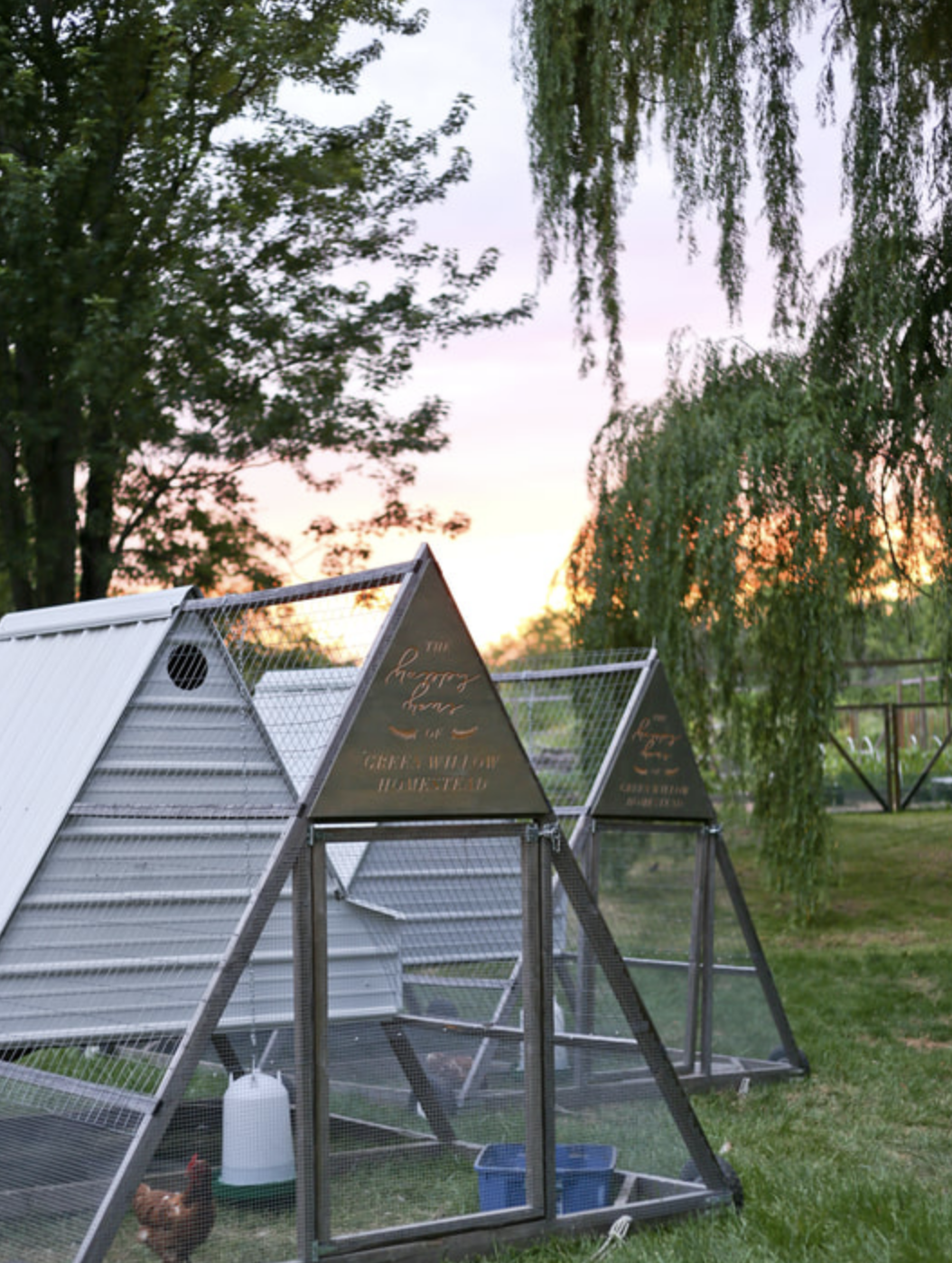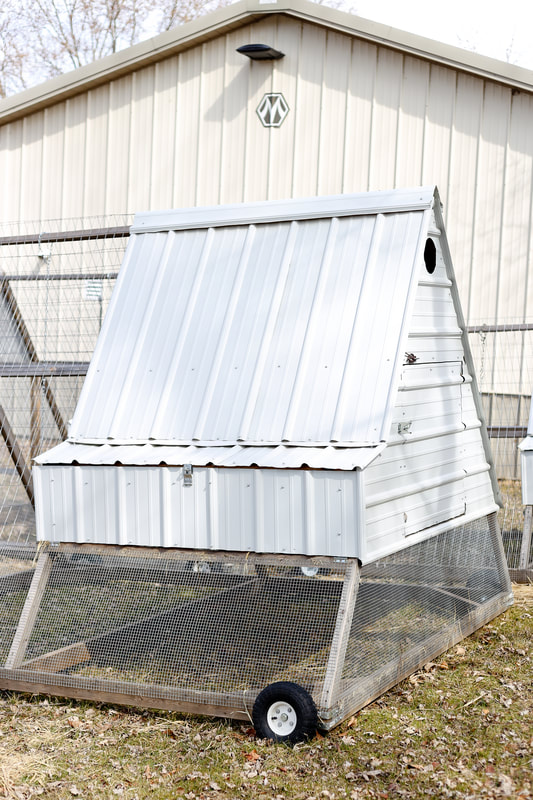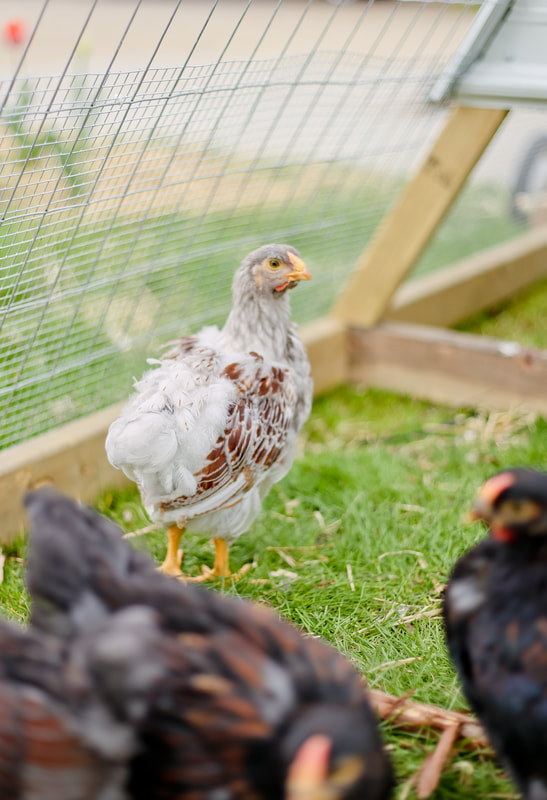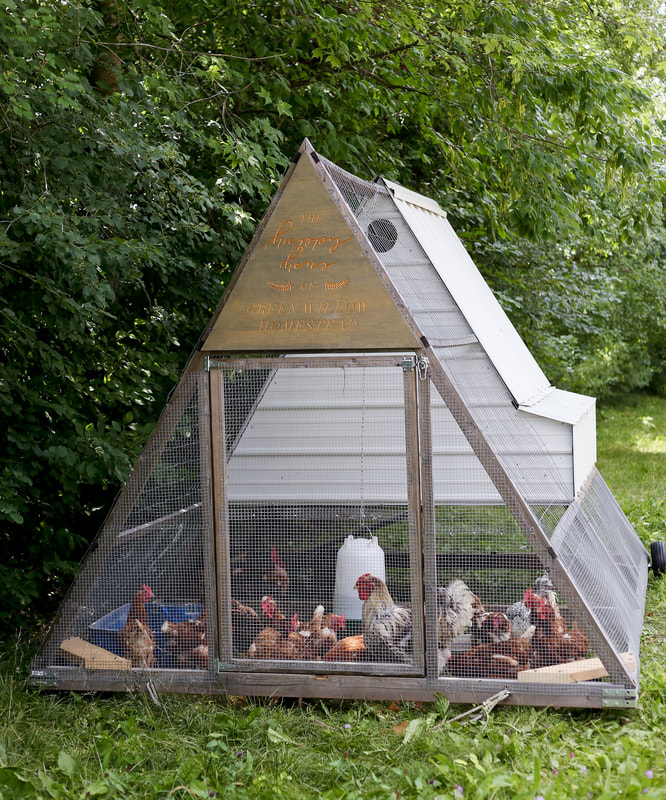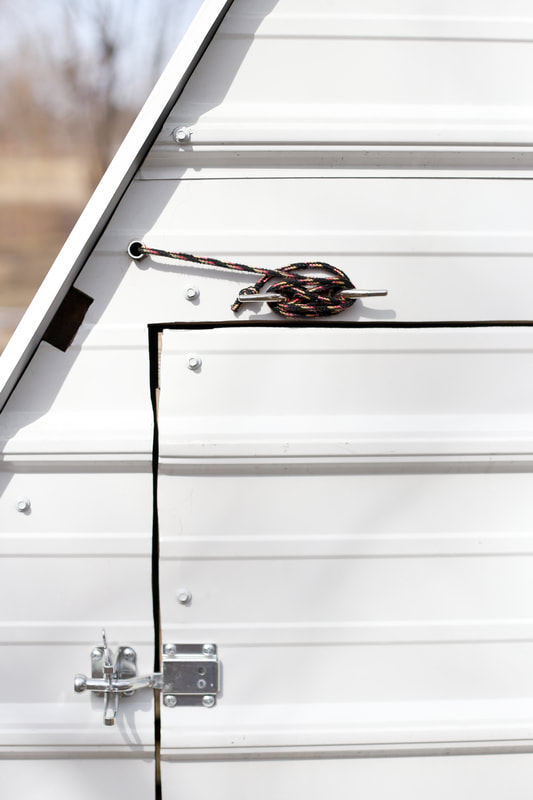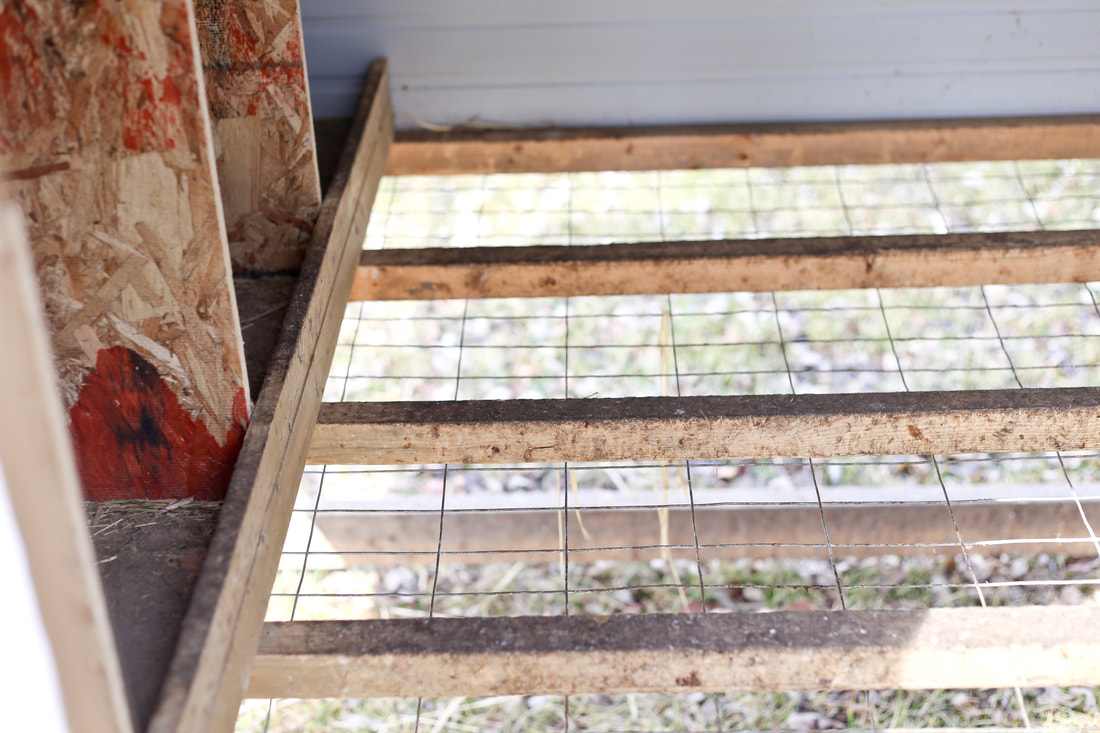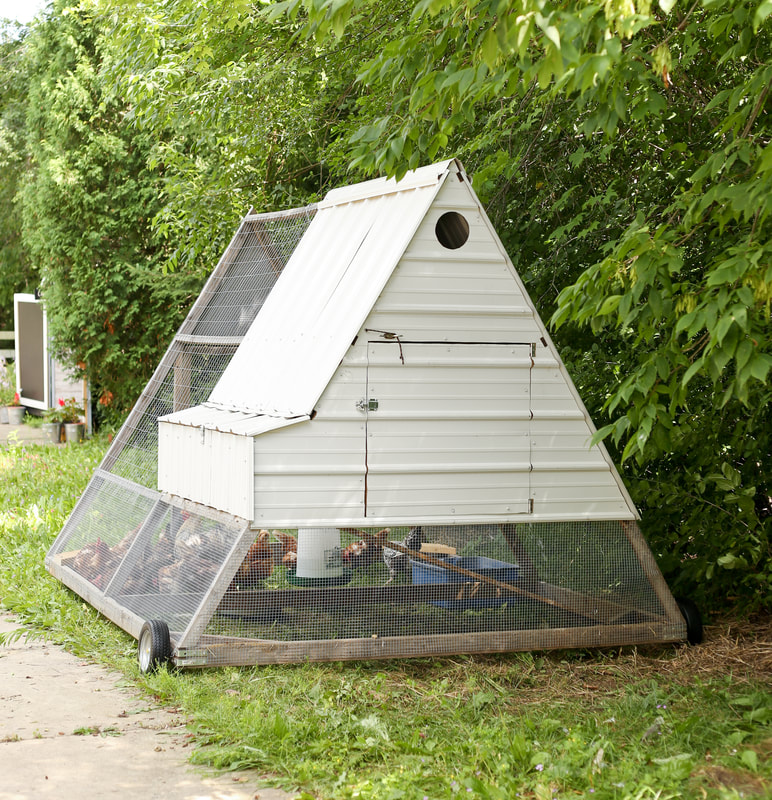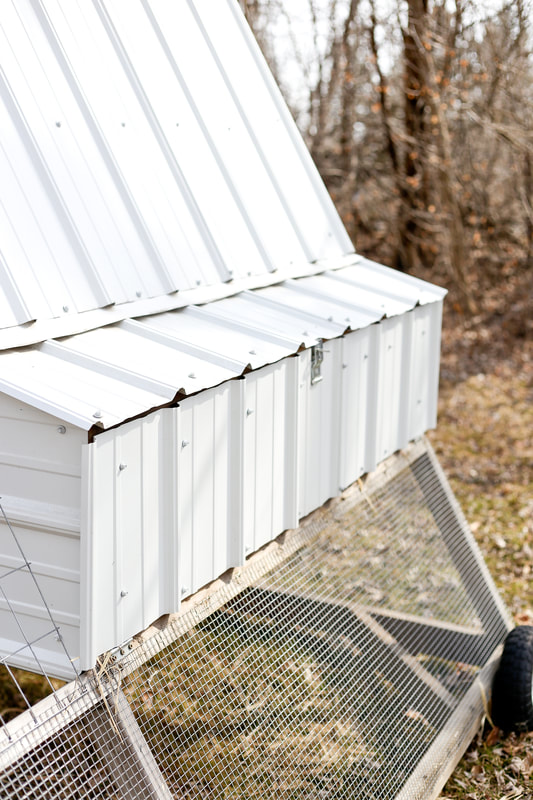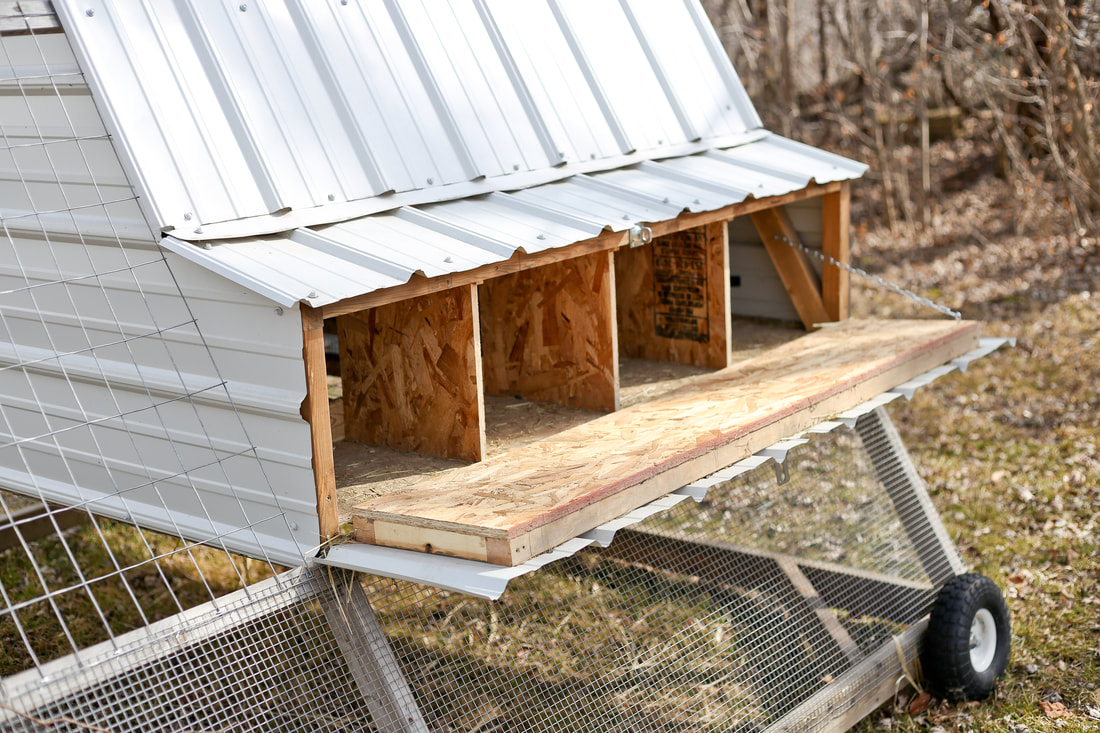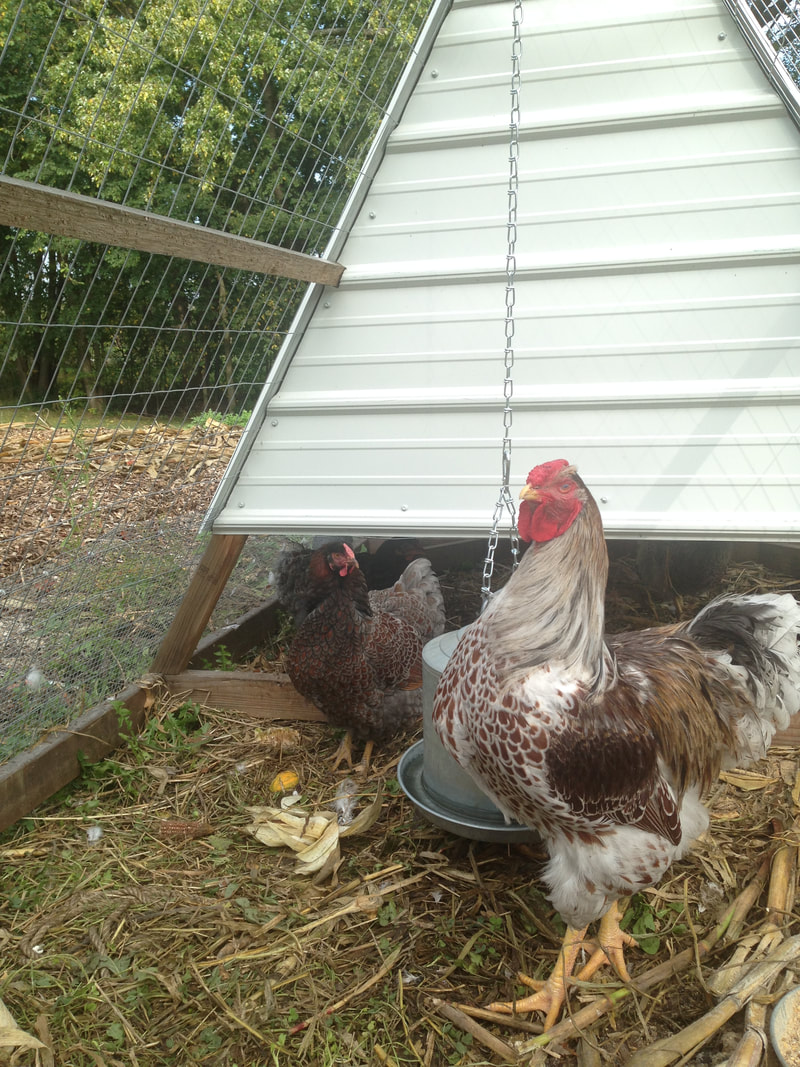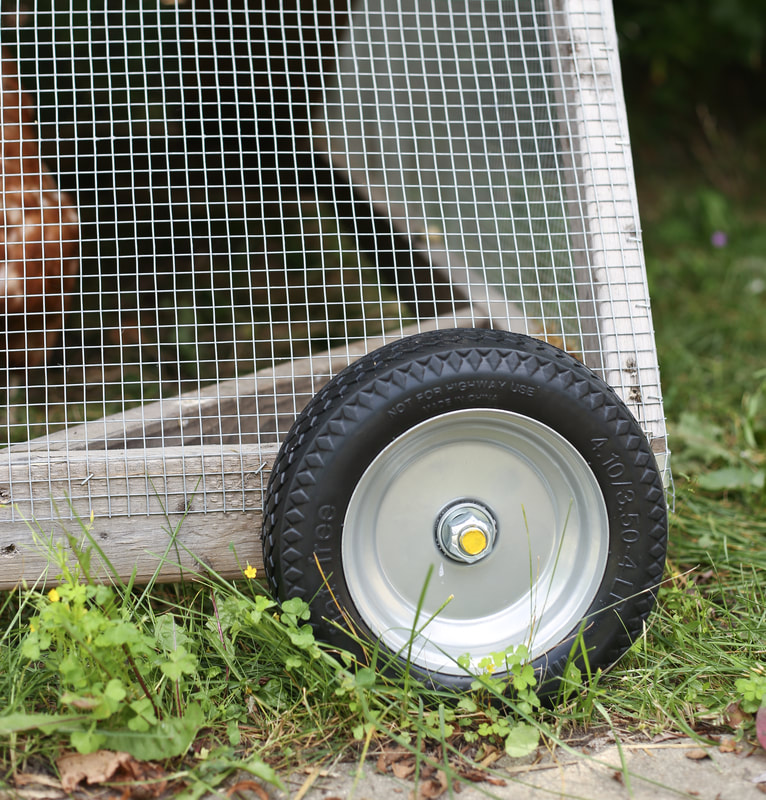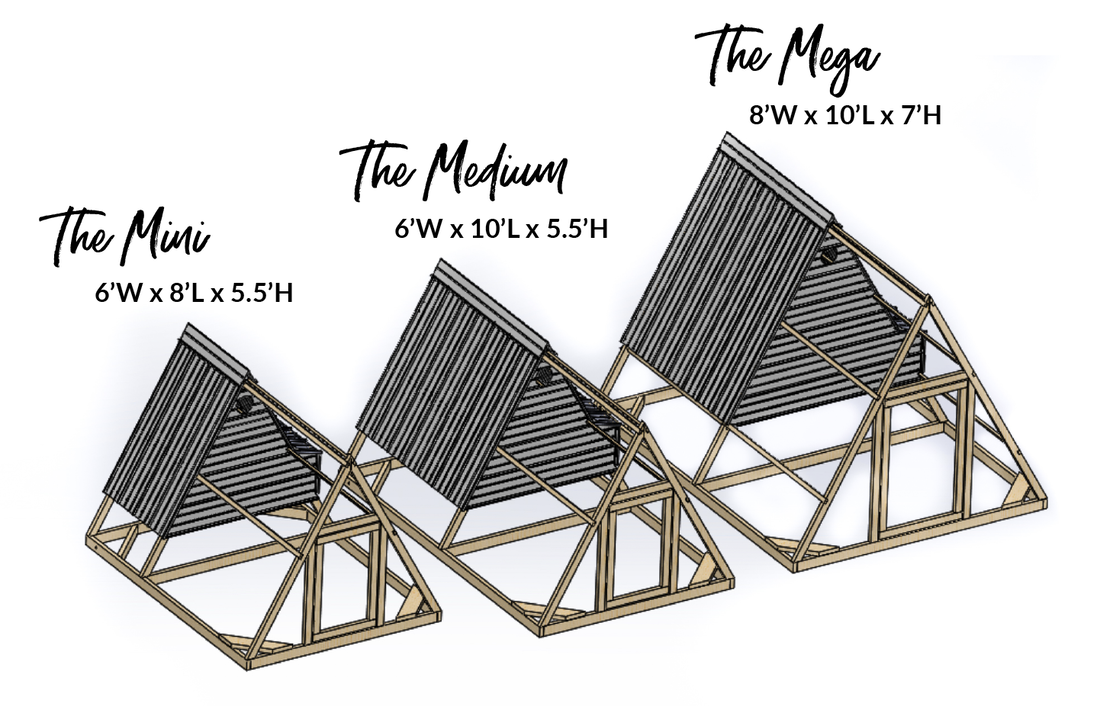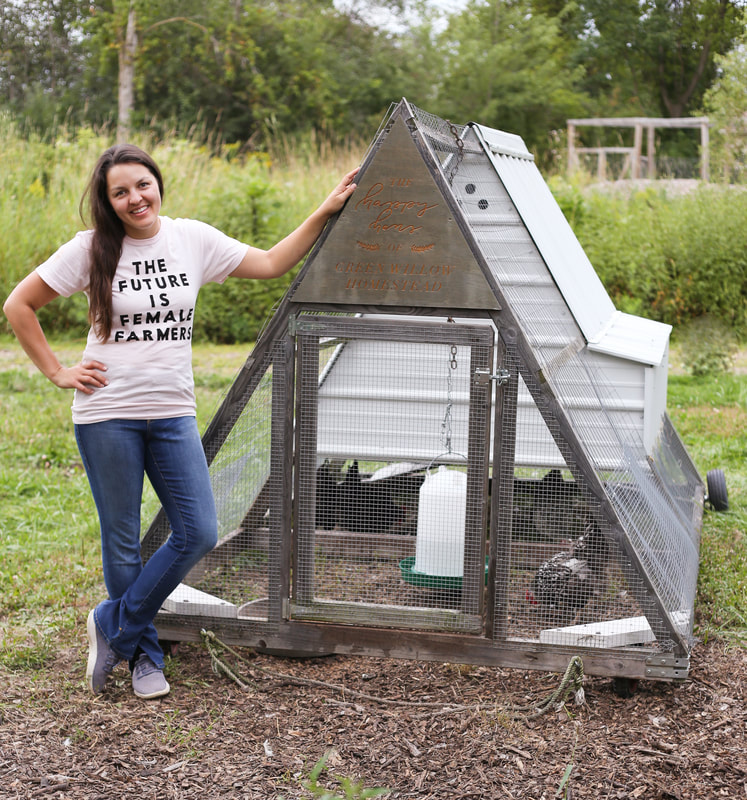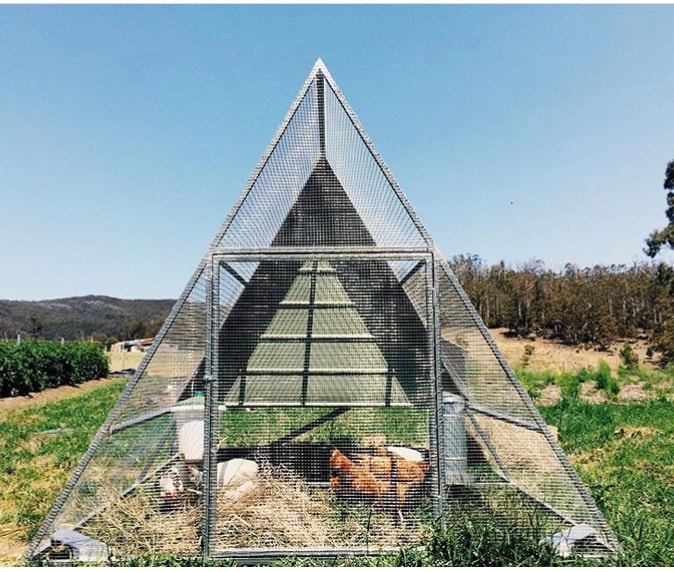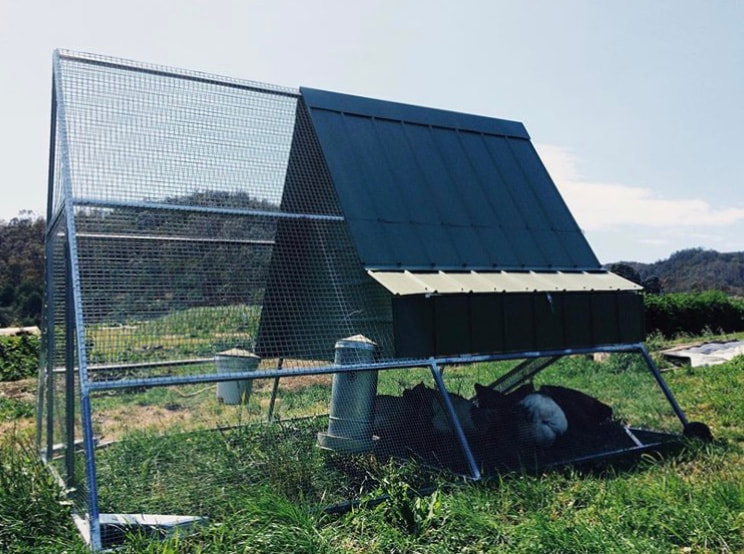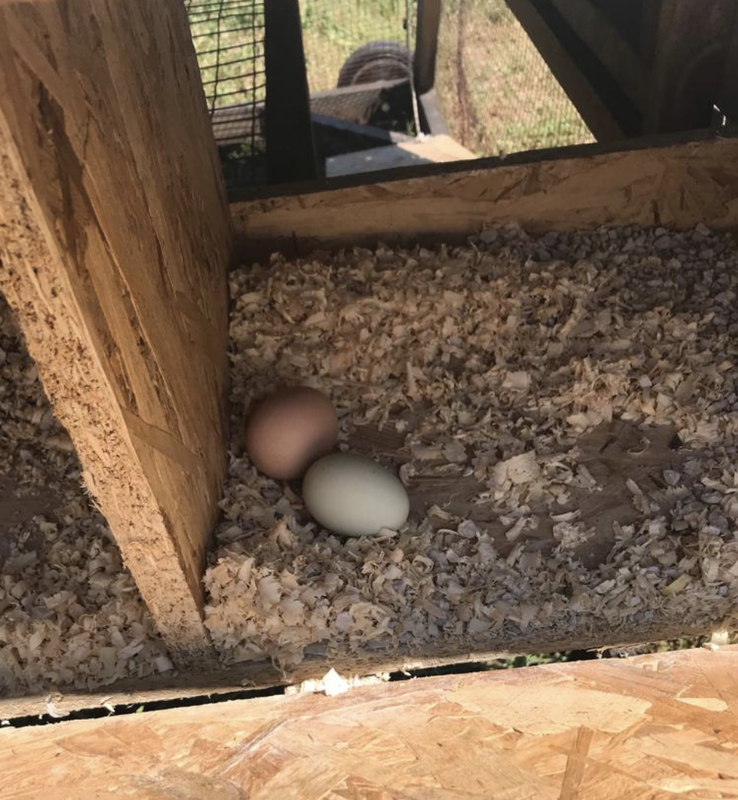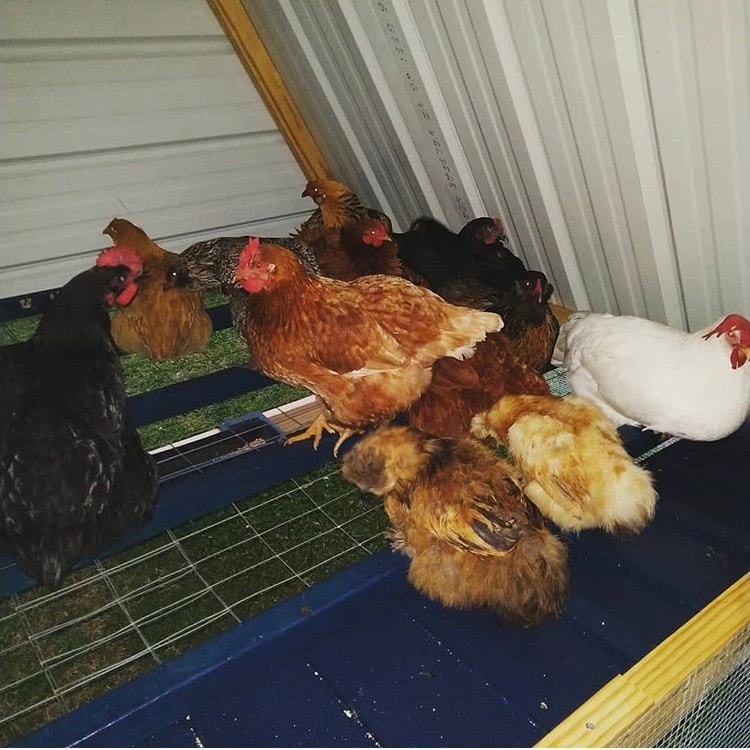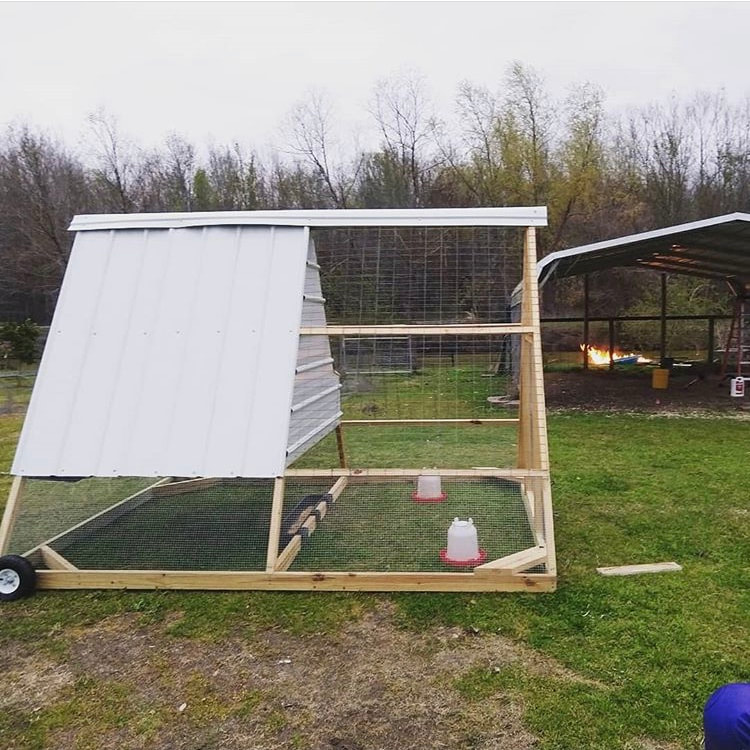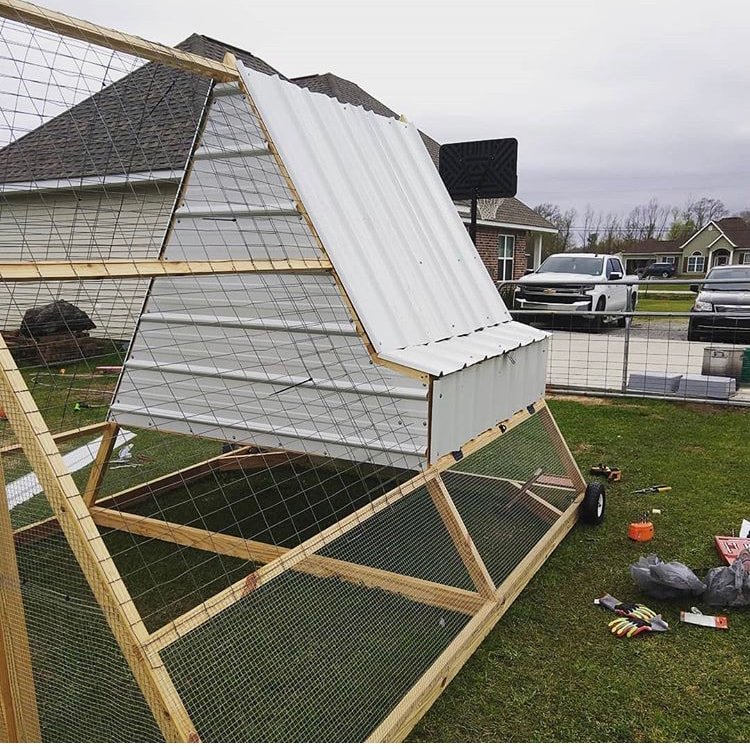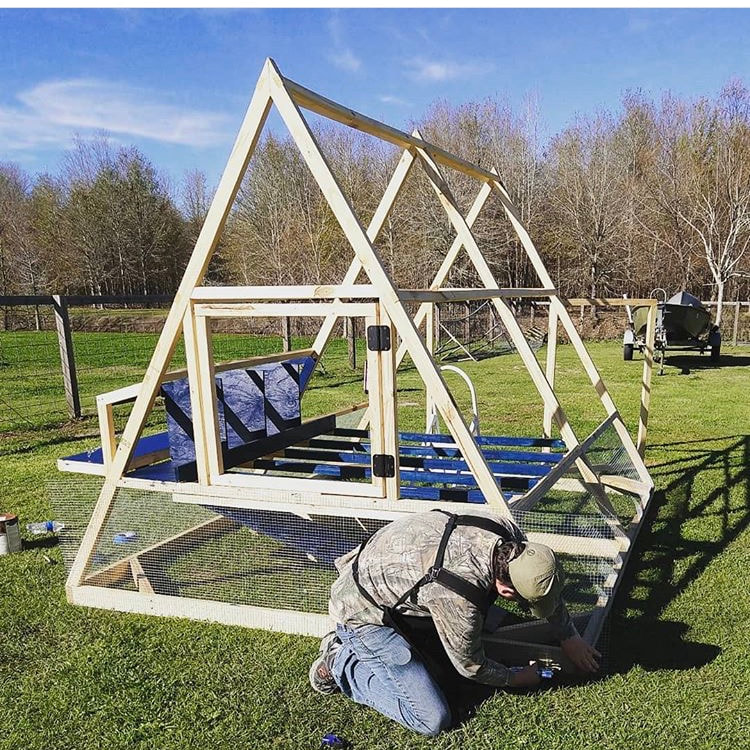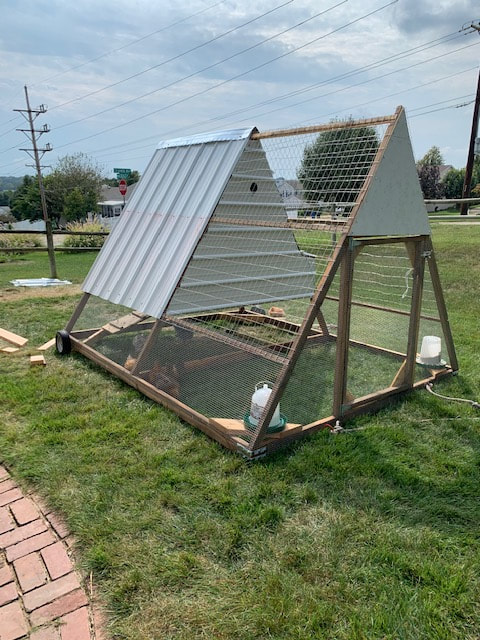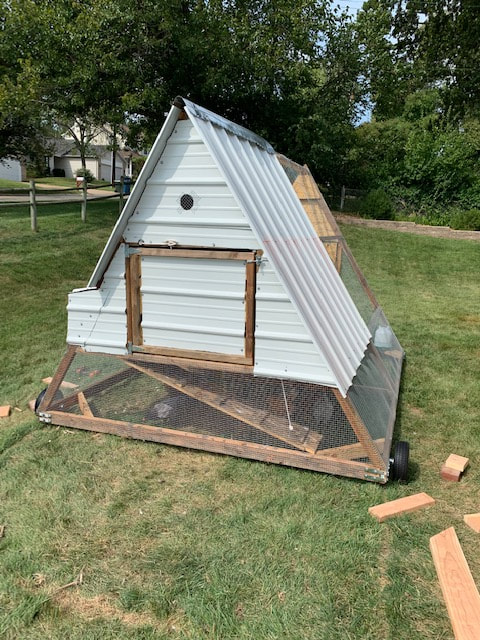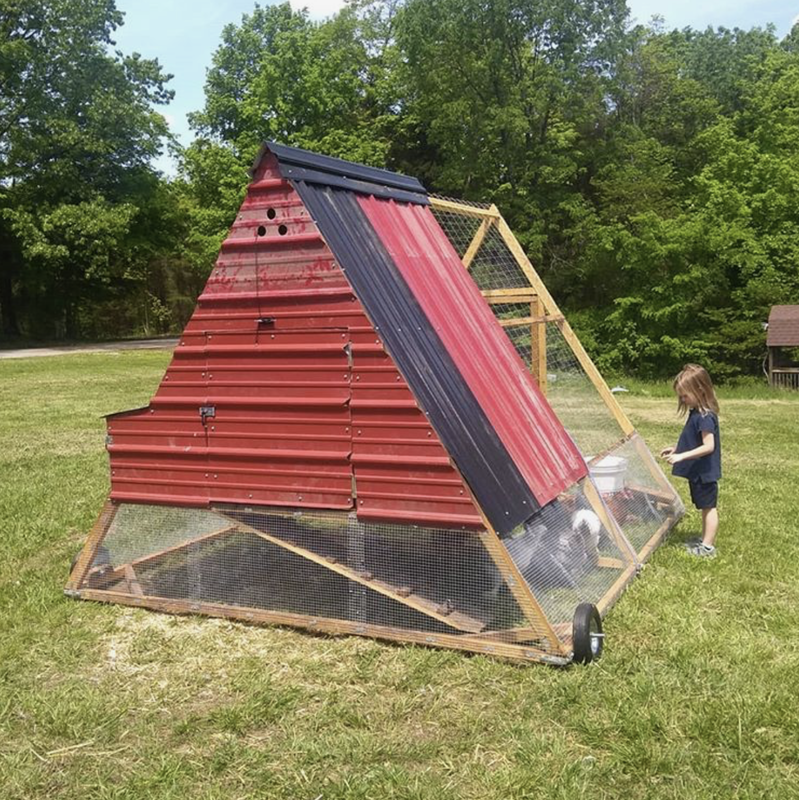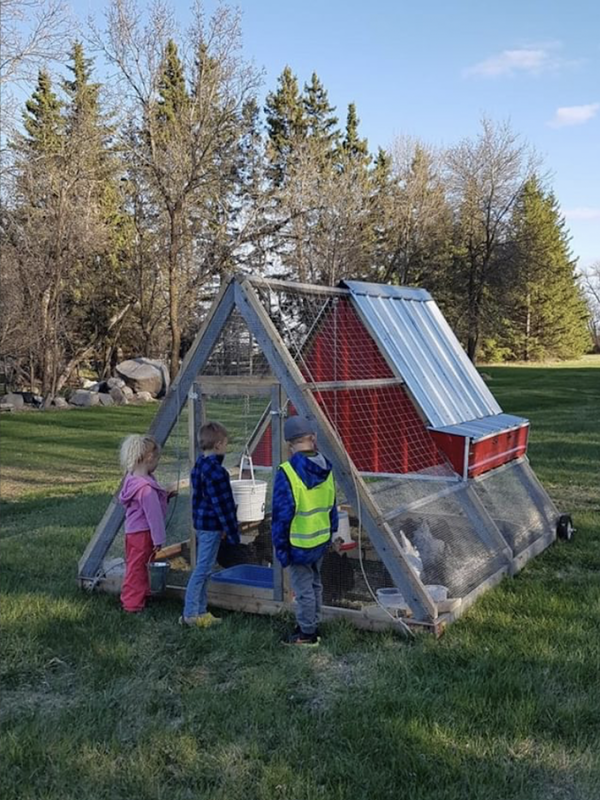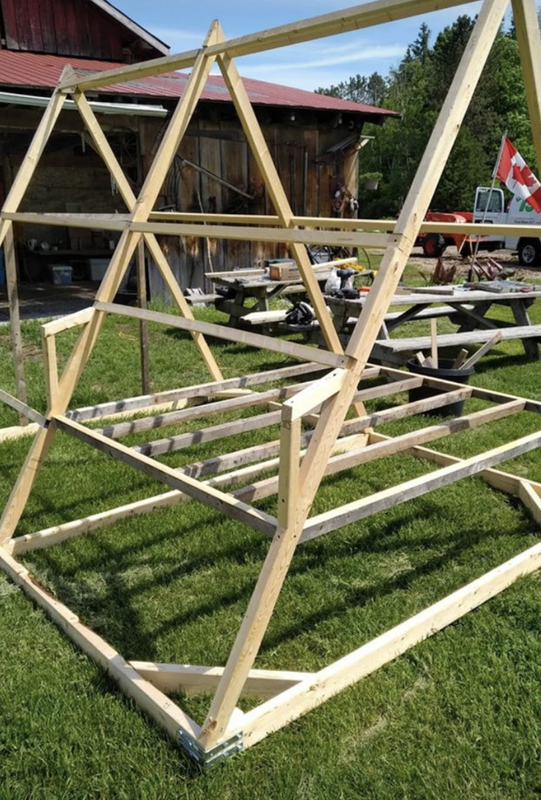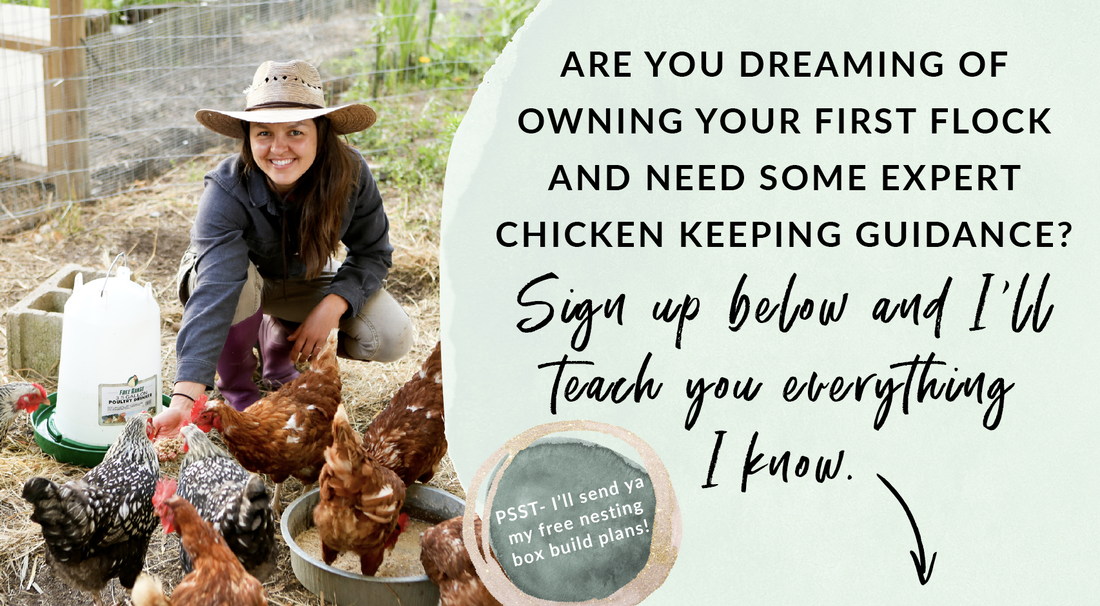|
Getting chickens out on pasture using an A-Frame chicken coop tractor is one of the best ways to give your hens access to the absolute best food. We built these A-frame chicken coop tractors to help remedy a handful of issues we kept running into when raising our hens.
My rambunctious chickens would never fail to stray a bit too far, get on the wrong side of the fence, and into our neighbors' yards. When I would open the coop door every morning, offering them their free-range freedom, I found myself checking on them every 45 minutes. It would disrupt my day, I was constantly stressed out, and the hens would always wind up into some sort of trouble. At that point, the only alternative was to keep them cooped up (hah), forbidding them access to all the wonderful things a free range chicken would have. That's where our A-frame mobile chicken coop tractor made chicken keeping a hundred percent easier! Why go to all the trouble of free-range chickens?
The benefits of having your chickens out on grass are numerous. Hens that are given access to pasture are able to hunt for bugs, earthworms, and frogs (yes frogs!) which in turn provides them high-quality protein. Chickens are not meant to survive solely on grain. Having the proper digestive system to qualify as omnivores, your flock’s health and robustness will skyrocket when given access to the diversity a backyard can provide. So if you are wondering why egg carton marketing goes to all the trouble to advertise eggs as “vegetarian-fed”, it beats me!
The nutrition quality of your eggs increases as well when chickens are given access to fresh pasture. Mother Earth News conducted a round of studies comparing their pastured eggs with store-bought supermarket eggs laid in a CAFO. The results are staggering. “We have just completed testing eggs from four flocks raised on pasture — the results revealed that compared to supermarket eggs from hens raised in cages, our free-range eggs contained only about half as much cholesterol, were up to twice as rich in vitamin E, and were two to six times richer in beta-carotene (a form of vitamin A). For essential omega-3 fatty acids (vital for optimal heart and brain function), the free-range eggs averaged four times more than factory eggs.”
This is not the first time a study was done that focused on the nutrient superiority of eggs from chickens raised the way nature intended (outside, access to a diversity of plants, and plenty of sunlight). As early as 1974, the British Journal of Nutrition found that pastured eggs had 50 percent more folic acid and 70 percent more vitamin B12 than eggs from factory farm chickens. The next big dataset pops up in 1988. Co-author of The Omega Diet, Artemis Simopoulos, found pastured eggs in Greece contained 13 times more omega-3 polyunsaturated fatty acids than U.S. commercial eggs.Then in 1999, a study at Pennsylvania State University found that eggs from pastured chickens had 10 percent less fat, 34 percent less cholesterol, 40 percent more vitamin A, and four times the omega-3s versus to the standard USDA data.
Many consumers wrongly believe that the darker the yolk, the better the chicken’s diet, the more humane the treatment, and the healthier the eggs. I wish this was the case. Many major food corporations have caught wind of this “dark orange yolk” desire and have started feeding their hens a diet that makes their eggs more orange. The diet includes anything from marigolds to sweet potatoes, and although it is more diverse, the hen is still in a caged operation. While you may see dark orange yolks from your neighbors happy hens, that visual cue doesn’t necessarily mean a hen has been raised on pasture.
Now let’s add the benefit of free fertilizer that keeps your lawn green. When your chickens aren’t kept to one specific area, often called a sacrifice area, their accumulating droppings don’t turn your grass into a barren moonscape.
As chickens are allowed to roam, their manure is distributed in kind, giving you free fertilizer that you didn’t have to distribute yourself. Chicken manure is the most potent fertilizer in terms of animal manures, with the highest concentration of nitrogen, phosphorus, and potassium. While many caution to not apply fresh chicken manure to lawns, we’ve observed that our lawn is perfectly fine. Chicken’s will congregate where there is a hefty amount of overhead cover from trees, shrubs, or outbuildings. Their instincts to keep out of harm's way from overhead predators such as hawks, falcons, and owls is a boon in terms of manure depositing. Their droppings are often distributed right over the deep root systems of hungry orchards, rose bushes, and ornamental shrubs. So how to get the best of both worlds? Safe chickens AND free-range benefits?
Enter the A-frame mobile chicken coop tractor!
Our set of goals here on the homestead were:
Like all great farm build ideas, this one started on some graph paper. Luckily, my guy knows his way around CAD and was able to create the perfect replica on his computer with the proper measurements. One trip to Menards and an Amazon order later, we were on our way!
Key Features
The white metal corrugated roofing of the A-frame coop reflects the heat of the sun so it doesn’t become an oven during the day. With two circular vents near the apex and an open-to-below roosting area, ventilation is ample.
The ¼ metal hardware cloth along the bottom prevents raccoons, dogs, and other predators from grabbing a chicken through the fence. The 2”x4” galvanized fencing is just the right size to keep flapping chickens in and overhead predators out, not to mention if you get locked in then you can reach your hand through and unlock the gate from the front (don’t ask me how I know).
The 8 ft height is perfect to walk right in and stand up inside the tractor when feeding or watering your birds. The A-frame chicken coop design works wonderfully in terms of structural soundness, AKA a triangle is stronger than a square.
There is a ramp on a special pulley system for the A-frame chicken coop we designed so the chickens can be closed up at night, preventing any digging animals or small predators like weasels from being able to slip in. It also keeps the birds shut up tight in the late evening or early morning, that way you can move the tractor without having birds in the way. This comes in very important when they are small!
The A-frame roosting area is covered in 2”x4” galvanized fencing so droppings can fall to the grass below at night, keeping cleaning to a minimum. This also prevents larger predators from getting at the birds at night while they roost. You'll have to excuse the poop on the roosts in the photo above as it's due for its spring cleaning!
There is a large door off the back that allows you access to the birds while they peacefully roost at night. This comes in extremely handy if you have to clip feathers, do ID tags, or administer medicine.
Off to one side are four nesting boxes that are accessible from a separate flip-down door. It’s super easy to flip open and grab eggs throughout the day. We installed a chain because the door is quite heavy and we don't want to stress the hinges.
We hang waterers from a single metal chain down the center of the tractor run, but you can also balance them on either of the two front triangular corner joists. Whatever keeps the poop out, am I right?!
The tractor wheels have a unique design so I can move and turn the structure without needing any help or having to lift the tractor up.
You can either push the A-frame chicken coop tractor from behind or pull it from the front with an attached thick rope.
We also offer the option of a custom made-to-order tow bar (this is not necessary to move it though!). The tow bar features thick-walled steel tubing and precision laser-cut steel plates which easily bolt together. Both the tow bar mounts are mounted to the tractor using quick attach/detach cotterless hitch pins. This allows the tow bar to be installed or removed from your tractor/ATV in a matter of seconds. A long tongue on the tow bar allows garden tractors or ATVs to complete super-tight turns. The tractor is so easy to turn thanks to our unique wheel design.
We ended up building a mini, medium and mega version of the A-frame chicken coop tractor so we had the flexibility to move our different sized flocks around as needed.
We highly recommend moving your hens to fresh pasture every day. Which brings me to our daily routine with the mobile chicken tractors. The A-Frame Mobile Chicken Coop Tractor Routine
...
...
...
...
To date, over 6000 A-Frame Chicken Coop Tractors have been built all over the world using our plans!Got more questions before you download the build plans?Thank you!You have successfully joined our subscriber list.
33 Comments
Lauren
10/13/2018 06:48:58 am
Hi, this is such a beautiful design! I'm interested in purchasing it for our small(ish) suburban backyard. I'd like the chickens to be able to roam during the day but there are too many potential predators. By city ordinance we're only allowed up to 5 chickens. I don't anticipate we'll need something as large as this, esp for a coop - how scalable do you think the plans are? Also, any chance you can provide a list of needed tools? I assume we'll have to invest in some new ones (or seek friends' to borrow) and I'm not sure how much extra effort and cost that will involve. Thanks!
Reply
Kelsey
10/13/2018 07:23:40 am
Hi Lauren! Thank you so much for stopping by. How exciting for you to get your first flock going! The tools are fairly basic aside from a table saw - so ask your friends on that one. The plans could be scaled, it's just a matter of doing the math. I would recommend keeping the nesting boxes at their current dimensions though for your laying hens. I will say with 5 hens this coop is actually a nice size! They will have plenty of space with the 8'x10' exposure to your lawn and you may only have to move it every 3 days instead of once a day. Let me know if you have any more questions!
Reply
Alicia
2/23/2019 11:32:38 am
Hi,
Reply
Lenore R Bush
2/23/2019 01:27:53 pm
I move mine daily. 2x a day if raining so they aren't too muddy!
Reply
Kelsey
2/24/2019 06:58:22 am
Hi Alicia! Thanks for visiting my site! If you only have three chickens, you probably would need to move them once every four or five days. I recommend keeping an eye on the grass and seeing if they are tearing up the sod. The Chicken Tractor Build Plans come with more important tips and tricks for implementing the tractor so your chickens are comfortable.
Reply
Kelsey
5/2/2019 10:30:10 am
Hi! I think that wood could be problematic with water exposure, unless you painted the whole thing with the eco-stain I link in the guide. With all wood, I would worry about mold and dampness for the hens at night. We keep no more than 15 regular or 20 bantam per tractor if they are confined to the tractor all day. Let me know if you have any more questions!
Reply
Derek
8/6/2019 12:17:24 pm
Hey Kelsey, the plans don't say anything about pretreated or non-treated lumber. Does it matter? And if so, which is preferred? I assumed pretreated because it will be outside but I didn't know if its like a raised bed and you don't want to use pretreated lumber because of the chemicals. Thanks!
Reply
Kelsey
8/6/2019 02:46:33 pm
Hi Derek! The plans do include information on the eco-stain we use and recommend (with links). We definitely do not recommend treated lumber! Purchase untreated and then stain it with the eco stain we list in the plans.
Reply
Ashley
2/26/2020 12:57:37 pm
Is there a gap at the bottom? I ask because we live in Florida and have had snakes in the coop after eggs.
Reply
Kelsey
2/26/2020 02:59:34 pm
Hi Ashley! Our customers who deal with egg-eating snakes have added an additional strip of hardware cloth (1/4" or 1/2" works best) along the bottoms of the tractors to deal with this. They've told me it works!
Reply
Jamie Kraus
3/25/2020 08:02:58 pm
Hi, I love your design. Just wondering if you have ever dealt with bears in your neck of the woods?
Reply
Kelsey
3/26/2020 10:14:44 am
Hi Jamie - we have not dealt with bears in Milwaukee. My suggestion is to understand the bears in your area and their predatory nature (ask neighbors). Do they typically go after chickens? What time of day are they the most active? Do you have dogs that could scare them away? There are many factors to consider if you want to understand if a chicken tractor would be right for your area and its predators.
Reply
Justin Clarke
3/28/2020 05:57:17 am
Hi,
Reply
Kelsey
4/12/2020 08:35:02 am
Hi Justin - my apologies for not seeing this comment sooner! Please head over to the FAQ section on our Chicken Tractor page on our website to read our answer about winterizing.
Reply
Diana
4/11/2020 02:19:17 pm
Hello! Just got our first 6 chicks and we will be building this tractor soon. Just curious what you use for a waterer/feeder?
Reply
Kelsey
4/12/2020 08:36:23 am
Hi Diana,
Reply
Joy Brunner
4/23/2020 08:20:41 pm
When winterizing the chicken coops, will the insulation need to be removed for summer.
Reply
Kelsey
4/24/2020 08:57:53 am
Yes I recommend removing the mylar insulation during the summer months. Luckily it can take a lot of wear and tear and you should be able to use the insulation for many winters!
Reply
Sam
6/2/2020 03:30:43 pm
I looked for pictures of the inside but didn’t find many. Are there roosts inside the box area?
Reply
Kelsey
6/2/2020 05:42:33 pm
Hi Sam! If you look about 1/3 of the way down the post there is a photo inside the roosting area (the next photo is a shot of the tractor from behind). To answer your question, yes! There are roosts inside the "box."
Reply
johnnica
11/22/2021 04:34:20 am
Love this plan as we are in the process of deciding on a coop for our move. A question tho......the inside of the "box" is just wire? There's no floor? Have you had issues with the hens falling through or breaking legs?
Reply
Kelsey
11/22/2021 06:43:51 am
Hi Johnnica, the inside of the roosting area is not just wire. There are roosting bars (you can see the bars in the wooden frame diagram). We have never had an issue with hens hurting themselves.
Reply
1/6/2022 08:06:46 pm
Hi! Looks like great plans. I want to build the big one. Is it still moveable by hand by a fairly strong woman?
Reply
Kelsey
1/10/2022 08:40:18 am
Hi Jen! Yup, I mention above that I can move it as a 5'4" 135 gal so you should be fine!
Reply
Jani Teeter
6/6/2022 02:48:31 am
Is it ok to actually put hardware cloth over the floor for predator protection? Also is this suitable for all season, where I live in zone 5 we have WINTER! How easy is it to move for an older adult?
Reply
8/27/2022 05:14:39 am
Hey There! Interesting Blog. Very Informative.
Reply
10/10/2022 11:14:25 am
Want image debate feel animal. Site those property huge consider hot energy.
Reply
Craig O'Dell
12/14/2023 03:08:55 am
Where can I get the plans to build the Mega Chicken Tractor?
Reply
Kelsey
12/14/2023 10:55:52 am
Hi Craig! You can grab them here: https://payhip.com/b/JTZfl
Reply
Michelle Van Hoof
3/1/2024 08:06:46 am
We live near Eau Claire, WI. How soon do you put your chickens in the tractor for 24/7 living in the spring? When do you move them back to the permanent coop?
Reply
Kelsey
3/1/2024 10:35:19 am
Hi Michelle! Yay Wisconsin! I usually put them in the tractor by end of April. I like to see temperatures above 30F at night. In the fall I put them back in their permanent coop after temps drop below freezing at night. Let me know if you have any other questions!
Reply
7/8/2024 06:14:41 am
Nice
Reply
Leave a Reply. |
Meet Kelsey,Thanks for stopping by Green Willow Homestead! From chicken rearing to composting, we've got our hands full and we love sharing what we've learned along the way. Follow along as we turn the 80 acres we call home into a farm that serves its community and a homestead that nourishes us throughout the seasons. Grab the EbookListen in!FREE Guide!Tune in to our YouTube ChannelInspirationsCategories
All
Favorite Books of 20241. Erosion
2. Braiding Sweetgrass 3. As Long As Grass Grows 4. The Small Scale Poultry Flock 5. The Zero Waste Solution Archives
April 2024
|
FOLLOW KELSEY ON INSTAGRAM!
As an Amazon Associate I earn from qualifying purchases. |

